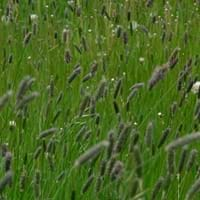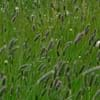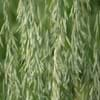Life Span
Perennial
Perennial
Origin
Europe, Asia
Hybrid origin
Types
not available
European plum, Gages, Japanese plum
Number of Varieties
Not Available
Habitat
Grassland
Moist Soils, Sandy areas, Wet ground
USDA Hardiness Zone
5-8
5-8
Sunset Zone
2a, 2b, 3a, 3b, 4, 5, 6, 7, 8, 9, 10, 14, 15, 16, 17, 21, 22, 23, 24
2a, 2b, 3a, 3b, 4, 5, 6, 7, 8, 9, 10, 11, 12, 14, 15, 16, 17, 18, 19, 20, 21, 22
Habit
Clump-Forming
Upright/Erect
Flower Color
White
Pink, White
Flower Color Modifier
Bicolor
Bicolor
Fruit Color
Not Available
Purple, Violet, Yellow, Red, Green, Purple, Burgundy, Bronze, Ivory
Leaf Color in Spring
Green
Pink
Leaf Color in Summer
Light Green
Not Available
Leaf Color in Fall
Green
Not Available
Leaf Color in Winter
Tan
Light Green
Leaf Shape
Grass like
Oval
Plant Season
Spring, Summer, Fall, Winter
Early Spring, Late Winter
Sunlight
Full Sun
Full Sun
Type of Soil
Clay, Loam, Sand
Clay, Sandy
The pH of Soil
Acidic, Neutral, Alkaline
Acidic
Soil Drainage
Average
Well drained
Bloom Time
Spring, Summer
Early Spring
Tolerances
Wet Site
Drought
Where to Plant?
Ground
Ground
How to Plant?
Seedlings
Grafting
Plant Maintenance
Medium
Low
Watering Requirements
Requires a lot of watering, Requires regular watering
Average Water Needs, Requires regular watering, Water daily during growing season, Water Deeply
In Summer
Lots of watering
Moderate
In Spring
Ample Water
Moderate
In Winter
Moderate
Average Water
Soil pH
Acidic, Neutral, Alkaline
Acidic, Neutral, Alkaline
Soil Type
Clay, Loam, Sand
Clay, Loam, Sand
Soil Drainage Capacity
Average
Well drained
Sun Exposure
Full Sun
Full Sun, Partial Sun
Pruning
Prune to control growth
Remove damaged leaves, Remove dead branches, Remove dead leaves
Fertilizers
Requires high amount of nitrogen
Nitrogen, Phosphorous
Pests and Diseases
Red blotch
Red blotch
Plant Tolerance
Wet Site
Drought
Flower Petal Number
Single
Not Available
Foliage Texture
Medium
Not Available
Foliage Sheen
Matte
Not Available
Attracts
Not Available
Ants, Aphids, Beetles, Mites
Allergy
Asthma, conjunctivitis, Rhinitis
Abdominal pain, Anaphylaxis, breathing problems, Hives, Swelling, Throat itching, Vomiting
Aesthetic Uses
Not Used For Aesthetic Purpose
Used for decorating walls, fences, gates, hedges, etc.
Beauty Benefits
Not Available
Improve skin tone, Skin Problems
Environmental Uses
Food for animals, Food for insects, Wildlife
Air purification, Shadow Tree
Medicinal Uses
No Medicinal Use
Bone strength, Brain disease, Cancer, Cellular Health, constipation, Diabetes, Digestion problems, Heart problems
Part of Plant Used
Whole plant
Fruits
Other Uses
cultivated as pasture or hay crop, Food for animals, Food for insects
Cosmetics
Used As Indoor Plant
No
No
Used As Outdoor Plant
Yes
Yes
Garden Design
Feature Plant, Groundcover, Rock Garden / Wall
Edible, Fruit / Fruit Tree
Botanical Name
ALOPECURUS pratensis
PRUNUS domestica 'Brooks'
Common Name
Meadow Foxtail
Plum
In Hindi
Meadow Foxtail
बेर
In German
Wiesenfuchsschwanz
Pflaume
In French
vulpin des prés
prune
In Spanish
pradera de cola de zorra
ciruela
In Greek
Meadow Foxtail
Δαμάσκηνο
In Portuguese
Meadow Foxtail
ameixa
In Polish
łąka ber
Śliwka
In Latin
meadow Foxtail
Plum
Phylum
Magnoliophyta
Vascular plant
Class
Liliopsida
Magnoliopsida
Clade
Angiosperms, Commelinids, Monocots
Angiosperms, Eudicots, Rosids
Tribe
Not Available
Not Available
Subfamily
Not Available
Amygdaloideae
Number of Species
Not Available
Importance of Meadow Foxtail and Plum
Want to have the most appropriate plant for your garden? You might want to know the importance of Meadow Foxtail and Plum. Basically, these two plants vary in many aspects. Compare Meadow Foxtail and Plum as they differ in many characteristics such as their life, care, benefits, facts, etc. Every gardener must at least have the slightest clue about the plants he wants to plant in his garden. Compare their benefits, which differ in many ways like facts and uses. The medicinal use of Meadow Foxtail is No Medicinal Use whereas of Plum is Bone strength, Brain disease, Cancer, Cellular Health, constipation, Diabetes, Digestion problems and Heart problems. Meadow Foxtail has beauty benefits as follows: Not Available while Plum has beauty benefits as follows: Not Available.
Compare Facts of Meadow Foxtail vs Plum
How to choose the best garden plant for your garden depending upon its facts? Here garden plant comparison will help you to solve this query. Compare the facts of Meadow Foxtail vs Plum and know which one to choose. As garden plants have benefits and other uses, allergy is also a major drawback of plants for some people. Allergic reactions of Meadow Foxtail are Asthma, conjunctivitis and Rhinitis whereas of Plum have Abdominal pain, Anaphylaxis, breathing problems, Hives, Swelling, Throat itching and Vomiting respectively. Having a fruit bearing plant in your garden can be a plus point of your garden. Meadow Foxtail has showy fruits and Plum has showy fruits. Also Meadow Foxtail is not flowering and Plum is flowering. You can compare Meadow Foxtail and Plum facts and facts of other plants too.





